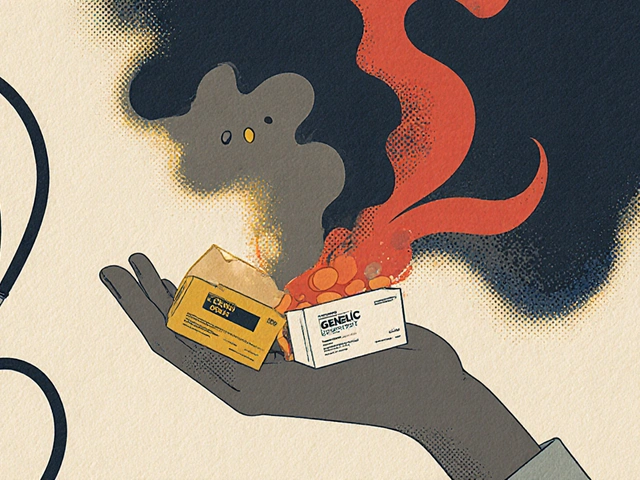Cyclobenzaprine Alternatives: What Works Best for Muscle Relief?
If you’ve tried cyclobenzaprine and hit side effects or want a cheaper option, you’re not alone. Many people look for other ways to ease muscle spasms without the drowsiness or price tag that come with cyclobenzaprine. Below you’ll find the most common prescription swaps, over‑the‑counter (OTC) picks, and simple lifestyle tricks that actually move the needle.
Prescription Swaps That Pack a Punch
Tizanidine (Zanaflex) is a fast‑acting muscle relaxant that works on the central nervous system. Most folks report less sedation than cyclobenzaprine, but you’ll need a doctor’s green light because it can affect blood pressure.
Baclofen (Lioresal) is another go‑to, especially for people with back‑related spasms. It’s taken in smaller doses several times a day, and the main downside is that it might cause weakness if you push the dose too high.
Methocarbamol (Robaxin) is popular for short‑term use after injuries. It’s generally well‑tolerated, but the relief can feel milder compared to cyclobenzaprine. Still, for a price‑conscious patient, it’s a solid pick.
Carisoprodol (Soma) offers a more relaxed feeling without the heavy sedation of cyclobenzaprine. However, it’s a controlled substance in many places, so availability can be limited.
When you talk to your pharmacist or doctor, ask about the cost differences. In Australia and the U.S., generic versions of tizanidine and baclofen often cost less than brand‑name cyclobenzaprine.
OTC and Natural Ways to Calm Muscles
Sometimes you don’t need a prescription at all. Non‑steroidal anti‑inflammatory drugs (NSAIDs) like ibuprofen or naproxen can reduce inflammation that fuels spasms. Pair them with heat packs, and you might find the pain drops dramatically.
Topical creams that contain menthol, camphor, or diclofenac give a cooling effect that numbs the area without systemic side effects. They’re especially handy for localized neck or shoulder knots.
Stretching and gentle yoga moves are free, proven methods to keep muscles loose. Even a 10‑minute routine each morning can prevent the tightness that leads people to reach for a muscle relaxant.
Magnesium supplements are worth a try if you’re prone to cramps. Many users report smoother muscle function, especially after workouts.
Remember, the best plan often mixes a low‑dose prescription with lifestyle tweaks. Start with a small dose of a milder alternative like methocarbamol, add an OTC NSAID if needed, and back it up with daily stretching. If you still feel foggy or the pain persists, schedule a follow‑up with your clinician to fine‑tune the regimen.
Bottom line: cyclobenzaprine isn’t the only game in town. Whether you gravitate toward tizanidine, baclofen, or a simple heat‑and‑stretch routine, there’s an option that fits your budget, side‑effect tolerance, and lifestyle. Talk to your healthcare provider, weigh the pros and cons, and pick the alternative that lets you move comfortably without the unwanted crash.

Cyclobenzaprine Alternatives in 2025: Exploring Your Options
Cyclobenzaprine, widely used for muscle relaxation, has significant alternatives in 2025. This article explores various options like Methocarbamol, highlighting their pros and cons. It helps readers understand which alternatives might work best for their needs. Each alternative is described in terms of effectiveness, side effects, and suitability for different conditions.




